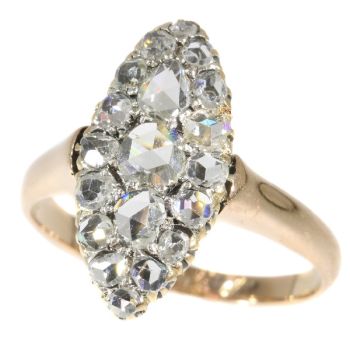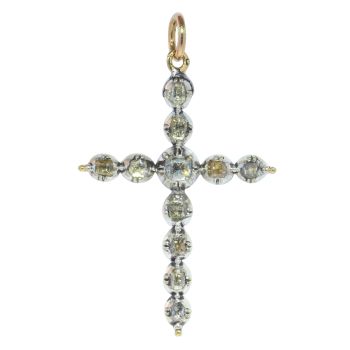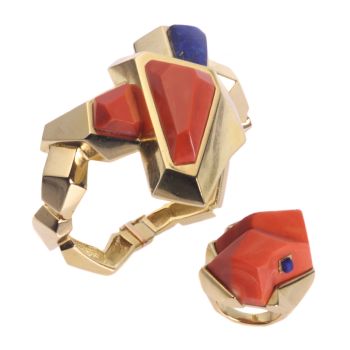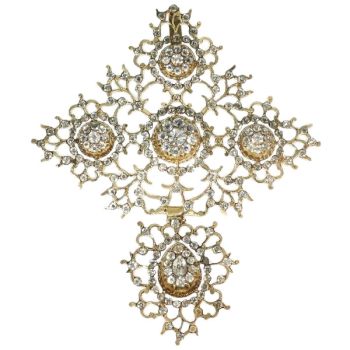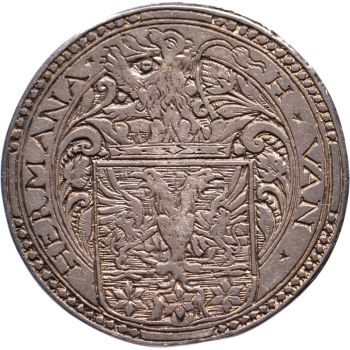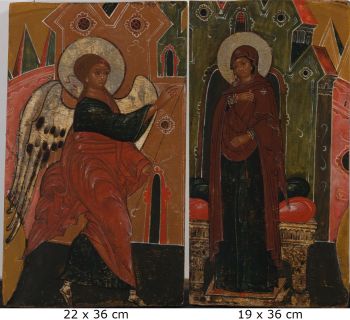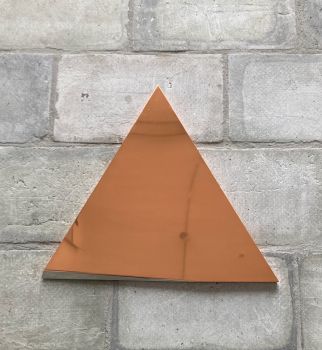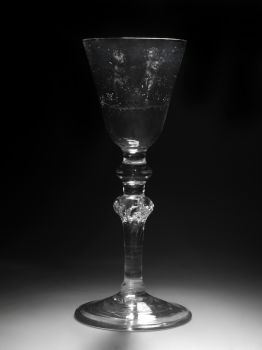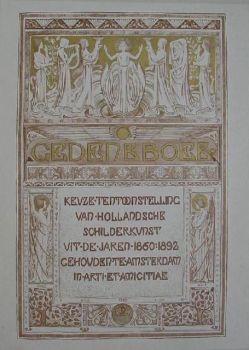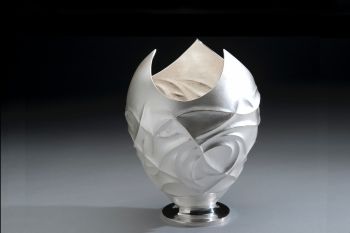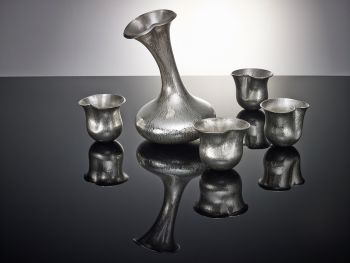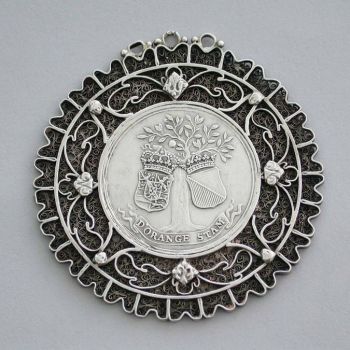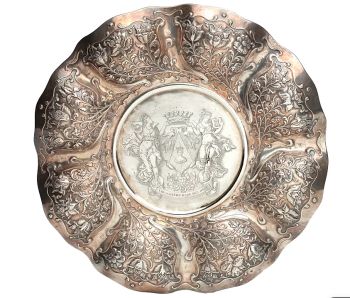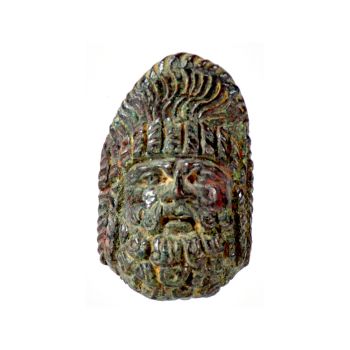Undertaker's riot in Amsterdam 1696
Unknown artist
Silver
€ 650
Jongeling Numismatics & Ancient Art
- About the artworkObverse: MOTOS PRÆSTAT COMPONERE FLVCTVS, Neptune in chariot with trident in left hand, crown and coat of arms of Amsterdam on the back of the chariot, blowing winds in the form of human heads
Reverse: HAICYONIBVS. REDVCTIS / SENATVS. AMSTELOD / CIVIBVS. SVIS. HOC / ANTIQVÆ VIRTVTIS . / SPECTATÆQ. FIDEI / PRÆMIVM IARGITVR / MDCXCVI, four kingfishers in a nest on a calm sea, rising sun, banner with Latin text, year in exergue
Variant without signature
OF THE HIGHEST RARITY
Slightly polished
The Aansprekers Riot was a popular uprising that took place in Amsterdam in 1696. 'Aansprekers' were undertakers of a sort, citizens who organised funerals. In January 1696, the council announced that a selection group of 72 aansprekers and lantern bearers would be appointed who would be given the city monopoly on arranging funerals. A group of approximately 250 private aansprekers became victims of this. Furthermore, this made funerals a lot more expensive because they were taxed. The city council had introduced the measure to generate more income due to the declining economy.
After the announcement of the new measure, the aansprekers spread the rumour that the poor would now be treated like trash when they died. Riots broke out in Amsterdam on January 31, 1696. Cheered on by the aansprekers, many poor people took to the streets in anger. On February 1, the militia intervened successfully. To deter the masses, a number of rioters were executed or exiled to Suriname. Yet the undertakers had achieved their goal, because the tax for aansprekers was ultimately not introduced.
Weight: 49.34 g
Diameter: AR 49.5 mm
Grade: Good very fine
Reference: cf vL. IV 161/221.2 - About the artist
It might happen that an artist or maker is unknown.
Some works are not to be determined by whom it is made or it is made by (a group of) craftsmen. Examples are statues from the Ancient Time, furniture, mirroirs, or signatures that are not clear or readible but as well some works are not signed at all.
As well you can find the following description:
•“Attributed to ….” In their opinion probably a work by the artist, at least in part
•“Studio of ….” or “Workshop of” In their opinion a work executed in the studio or workshop of the artist, possibly under his supervision
•“Circle of ….” In their opinion a work of the period of the artist showing his influence, closely associated with the artist but not necessarily his pupil
•“Style of ….” or “Follower of ….” In their opinion a work executed in the artist’s style but not necessarily by a pupil; may be contemporary or nearly contemporary
•“Manner of ….” In their opinion a work in the style of the artist but of a later date
•“After ….” In their opinion a copy (of any date) of a work of the artist
•“Signed…”, “Dated….” or “Inscribed” In their opinion the work has been signed/dated/inscribed by the artist. The addition of a question mark indicates an element of doubt
•"With signature ….”, “With date ….”, “With inscription….” or “Bears signature/date/inscription” in their opinion the signature/ date/ inscription has been added by someone other than the artist
Are you interested in buying this artwork?
Artwork details
Related artworks
Unknown artist
A JAPANESE MODEL OF A NORIMONO, A PALANQUIN1650 - 1700
Price on requestZebregs & Röell - Fine Art - Antiques
1 - 4 / 12Unknown artist
An Amazon Indigenous Kayapo feather headdress1950 - 1960
Price on requestZebregs & Röell - Fine Art - Antiques
1 - 4 / 24Willem Maris
Polderlandschap met koeien en molens op warme zomerdag1880 - 1890
Price on requestPrivate Collection Classic Arts
Dutch School
Arrival of a Dutch East Indiaman in the Table Bay18th century
Price on requestZebregs & Röell - Fine Art - Antiques
Antonie Derkinderen
Memory book Exhibition of Dutch Painting1892
Price on requestKunsthandel Pygmalion
Johannes Evert Akkeringa
'Nettenboetsters' in the Dunes1861 - 1942
Price on requestStudio 2000 Art Gallery
1 - 4 / 24Unknown artist
Japanese art deco lacquervase with Scarab beetle motif1920 - 1950
Price on requestDille Art
Unknown artist
AN UNUSUAL INDONESIAN LOBBED SILVER DISHlate 17th
Price on requestZebregs & Röell - Fine Art - Antiques
1 - 4 / 24- 1 - 4 / 12





